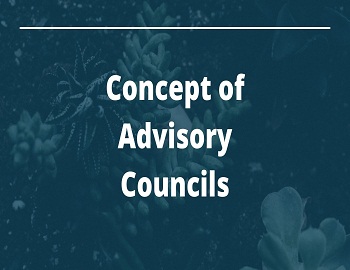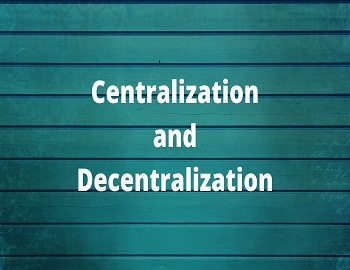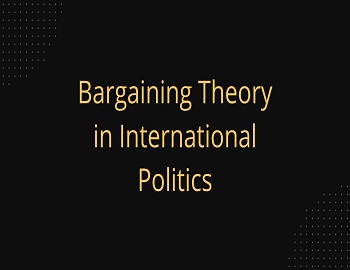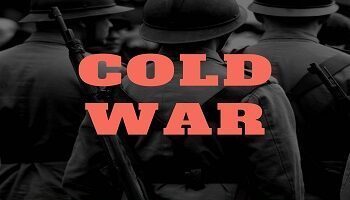Public and Private Administration Dissimilarities:
Though there are several points of similarities between Public Administration and Private Administration there are also several points of difference between the two. Both are two different forms of administration. Simon says, “In the popular imagination, governmental administration is bureaucratic, private administration is business-like, government administration is political, private administration is non-political, government administration is characterized by red tape, private administration is not.
Explaining the differences between Public and Private administrations, Paul H. Appleby observes, “In broad terms, the governmental functions and attitudes have at least three complementary aspects that go to differentiate government from all other institutions, areas of activities, breadth of scope, impact, and consideration, public accountability, and political character. Public Administration works in close proximity to politics and enjoys the benefit of political responsibility for administrative activities. Private Administration can remain away from politics and is directly and solely responsible for its own activities.
The differences between Public Administration and Private Administration can be described under the following heads:
(1) Public Administration is comprehensive in scope- The scope of Public Administration is wider than that of Private Administration. The activities of even the biggest private organization or administration do not cover the same area as covered by government activities. Public Administration is very comprehensive. It deals with the multi-dimensional needs of the people.
(2) Differences of Objectives- The aim of Public Administration is not profit but the welfare of all, while the objective of Private Administration is profit. Public Administration is governed by the supreme objective of service to the people and any profit that may result is incidental to the service rendered.
(3) Uniform treatment in Public Administration- There is a certain uniformity of treatment in Public Administration. Services are provided by Public Administration without any favor. All decisions and actions are carried out in accordance with set rules and regulations. No one can be favored at the cost of another. But Private Administration need not worry about uniformity in treatment. It can deal differently with different customers. Rules and regulations can be bypassed for the sake of profits or future customer relations.
(4) Public Administration characterized by red tape, routine, and Delay- Delay and inefficiency have come to be the characteristics of Public Administration. In Public Administration, all the formalities of law have to be completed before doing a certain action. To work according to rules, to interpret and apply rules according to rules, and to do only specifically assigned tasks, together produce delays and inefficiency in Public Administration. The network of rules and regulations which have to be followed by the personnel engaged in operationalizing Public Administration is a source of delay, red tape, and inefficiency. There is more efficiency in Private Administration. Work is done in Private Administration with more devotion and enthusiasm Simon says, “….Governmental Administration is characterized by red tape, Private Administration is not.” Private Administration leads to more production of goods while Public Administration delivers the goods and services at a slower rate and at higher costs.
(5) Public Administration is more responsible- Officials engaged in running Public Administration have always to bear in mind that all their actions are judged and discussed, criticized, and scrutinized by the public. It has to work in accordance with the allotted tasks, and allocated funds and remain under continuous public control exercised through the legislature, executive, Judiciary, and the press. It has to work under the political executive which is both responsible and accountable to the people. Public opinion is the greatest check on the officials. But private administration is not open to the public scrutiny. It has an internal control mechanism. The owners/top managers exercise direct control over the activities of the officials. The public has little role in controlling Private Administration. However, it too has to satisfy the normal rules and conditions laid down by the government
(6) Difference regarding anonymity- In Public Administration, there is the anonymity of the officials. The officials work as agents of the state and by virtue of the posts they hold. On the contrary, Private Administration does things on its own behalf and is well-known in business circles.
(7) Public Administration is more open and clear, whereas Private Administration is secret- Public Administration is open to public scrutiny. It has to maintain a clear record in the eyes of the public and the press. Huxley writes, “The state lives in the glass house, we see what it tries to do, and all its failures, partial, or total are made the most of. But the private administration is sheltered under good opaque bricks and mortar.” Secrecy of transactions is a golden rule of Private Administration. Openness is a requisite qualification of Public Administration. In Private Administration, all records are secret and the proprietor alone has access to them. In Public Administration, the records are public property and have to be continuously and thoroughly scrutinized by the designated public authorities.
(8) There is public control over the finances in Public Administration while money belongs to the investors in Private Administration- Financial autonomy is the supreme feature of Private Administration. Freedom of financial management enables Private Administration to be more enterprising than Public Administration. It may not be answerable to anyone about how it uses the money, while the finances in Public Administration are controlled by the state. The Parliament maintains strict control over the finances and financial transactions of Public Administration. The budget is the instrument of legislative i.e., public control over the administration. Audit of all governmental transactions is compulsory.
(9) Monopolistic character of Public Administration- There is generally a monopoly of the government over certain areas of social-economic relations and it does not allow Private Administration to compete with it. Private administration works in an environment of competitiveness. Private enterprises have to compete with each other and in the process, they register rapid development. As against it, lack of competition is a source of slackness for Public Administration.
Thus there are several recognizable differences between Public and Private Administration.









Comments (No)